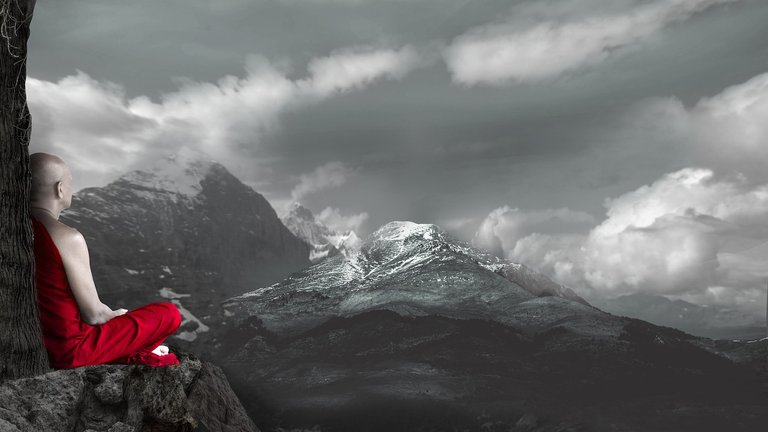
This is Part 2 of the Hermit series. In Part 1, we heard a lot from the major religions. Let’s consider some other hermits as well. Here are 10 to consider.
1.) The Sybil of Cumae
Sybils were prophetesses of the ancient classical world. They were more oracle than hermit, for the most part. But perhaps the greatest of them all, the Sybil of Cumae, fit any definition of a hermit. She lived in a cave on the western coast of Italy, near a temple of Apollo. Through her experience, she had visions which led her to make prophecies that were quite influential. Virgil and Livy both wrote about these prophecies from the Sybil.
“The nations of Italy, the wars to come, the mode whereby thou art to flee or face each toil, she will unfold to thee; and, reverently besought, she will grant thee a prosperous voyage.” –Virgil, The Aeneid
2.) The Desert Mothers and Fathers
In the third century A.D., there were communities of Christian monks and nuns that formed in the deserts of Egypt. Some lived together, while others lived as hermits. St. Anthony is the best known of the Desert Fathers, being credited as the Father of Monasticism. But before that, he lived for 15 years as a hermit and ascetic.
There also were a number of notable women in these groups. The Sayings of the Desert Fathers included no less than 12 sayings that were attributed to one of the Desert Mothers, named Amma Syncletica. Born into a wealthy family, she gave away all her money to the poor and left her home in Alexandria, taking up a life around the tombs in the desert outside the city. Beginning as a hermit, she attracted a following there over time.
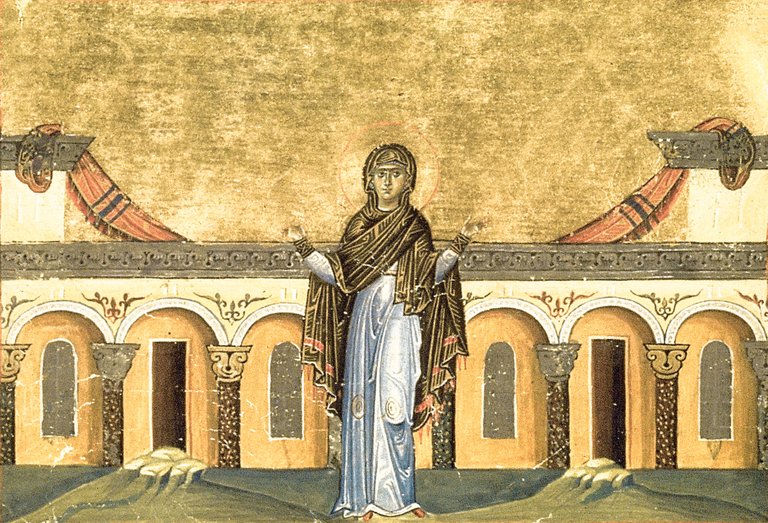
One of Amma Syncletica’s sayings makes it clear that the real hermit is in one’s mind. "There are many who live in the mountains and behave as if they were in the town; they are wasting their time. It is possible to be a solitary in one's mind while living in a crowd; and it is possible for those who are solitaries to live in the crowd of their own thoughts." Chryssavgis, John (2008), In the Heart of the Desert: Revised Edition: The Spirituality of the Desert Fathers and Mothers (Treasures of the World's Religions), Bloomington, Ind.: World Wisdom, pp. 29–32.
3.) Laozi (Lao Tzu, Lao Dan)
The legendary Daoist (Taoist) philosopher, a beloved figure in China, remains influential far beyond its borders. Laozi is the probable author of the Daodeching (Tao Te Ching) and he may have been the teacher of Confucius. More of an ethic and philosophy than a religion (and being quite compatible with major religions), Daoism preaches living simply and remaining in harmony with “the way”. Late in his life, Laozi left his home to live as a hermit.

4.) Francis of Paola
In 18th Century Europe, hermits became popular. Many lords had to have their own garden hermit living on their property. Garden hermits were considered an ornamental part of the gardens.
And Francis of Paola probably was the one who started this trend. He lived in a cave on his father’s property.
Today, porcelain garden gnomes are popular garden decorations. They harken back to the day when people had actual hermits living on their properties.
5.) Coleridge’s Hermit Good
Samuel Taylor Coleridge’s Rime of the Ancient Mariner has become one of the most influential poems in English literature. The Mariner’s difficult journey, Coleridge suggested, resulted from him having shot the albatross near the beginning of the story. Upon surviving the journey and reaching his home port as a shadow of his former self, the Mariner’s first act is to seek out the Hermit good.
I saw a third – I heard his voice:
It is the Hermit good!
He singeth loud his godly hyms
That he makes in the wood
He’ll shrieve my soul, he’ll wash away
The albatross’ blood
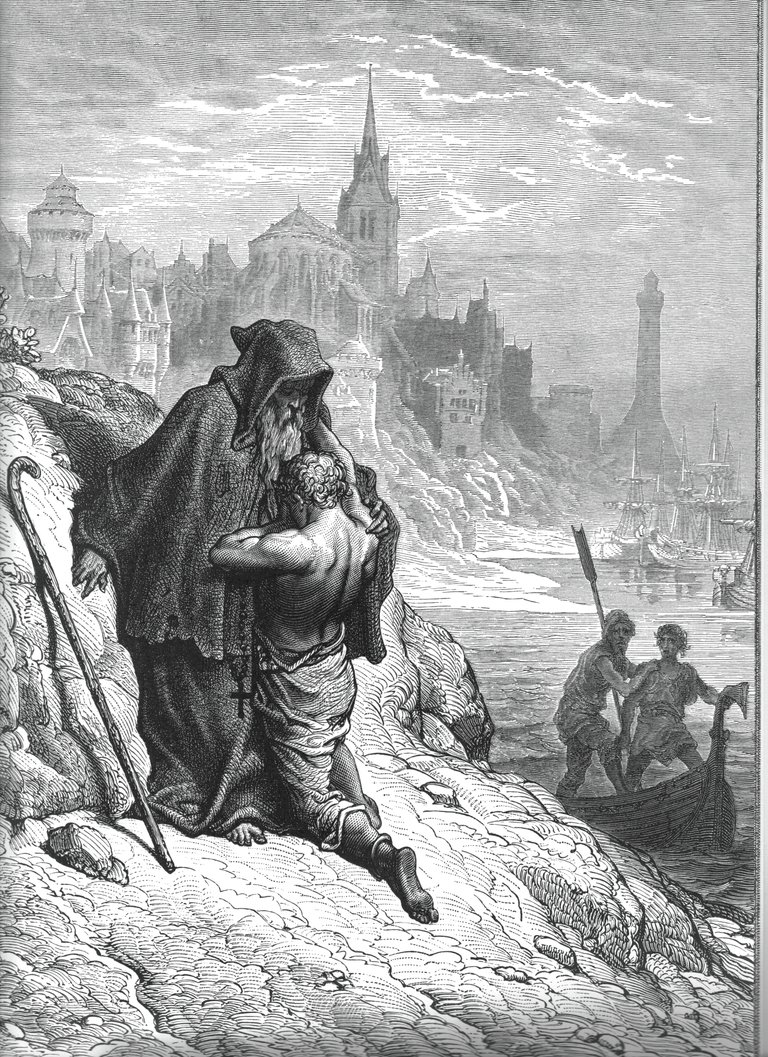
Gustav Dore's sketch of the hermit forgiving the mariner.
“O shrive me, shrieve me, Holy Man!” the Mariner asks of him. And in telling his tale to the Hermit good, he is reborn again, though still sentenced to recount his cautionary tale again to other unfortunate souls.
6.) The Hermits of Catherine the Great and Andrew Jackson
These might be red herrings. Whether or not Catherine the Great had her own hermit, she founded one of the world’s greater art museums. Located in St. Petersburg, Russia, it’s known today as The Hermitage. Apparently, the name comes because if its exclusivity. Hermits are known to be solitary. And initially, only a select group of people could visit this collection of art in the Winter Palace, so it became known as the Hermitage.
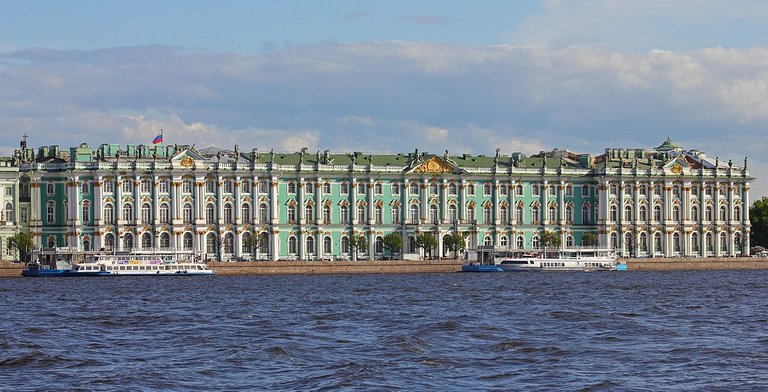
Hermitage Museum, Russia. Creative Commons, Wikimedia, by A. Savin.
Similarly, U.S. President Andrew Jackson used the name Hermitage for his home in Tennessee. Andrew Jackson was known for throwing wild parties and inviting the public to them. But he considered his home in Tennessee to be his refuge, so he named it the Hermitage. Occasionally, even one of the craziest presidents considered himself a hermit.
7.) Arthur “Boo” Radley
To Kill a Mockingbird is a classic work of American literature and film. In it, there was a mysterious character named Boo Radley who was a recluse. In the movie, Boo Radley was played by a young Robert Duvall.
Children in the story were fearful of Boo Radley because of some of the stories told about him. In a story that includes abuse of a young person, Radley did some creepy things like leaving hidden gifts outside for the children. But in the end, he was one of the stories heroes because he protected the children from the real villain.
8.) Henry David Thoreau
Thoreau was one of the premier nature writers who has ever lived. He was most famous for Walden, which was written when he lived as a hermit next to Walden Pond near Concord, Massachusetts. In Walden, he shared the following rationale for why he went off to live simply in the woods and focus on his writing.
I went to the woods because I wished to live deliberately, to front only the essential facts of life, and see if I could not learn what it had to teach, and not, when I came to die, discover that I had not lived. I did not wish to live what was not life, living is so dear; nor did I wish to practise resignation, unless it was quite necessary. I wanted to live deep and suck out all the marrow of life, to live so sturdily and Spartan-like as to put to rout all that was not life, to cut a broad swath and shave close, to drive life into a corner, and reduce it to its lowest terms, and, if it proved to be mean, why then to get the whole and genuine meanness of it, and publish its meanness to the world; or if it were sublime, to know it by experience, and be able to give a true account of it in my next excursion. -- Henry David Thoreau, Walden
9.) The Hobbit
J.R.R. Tolkien’s Hobbit and Lord of the Rings books (and the movies based on them) have been loved by many fans over the years. The Hobbit character might seem at first to have been something of a hermit, but he actually lived within his community and was not a recluse.
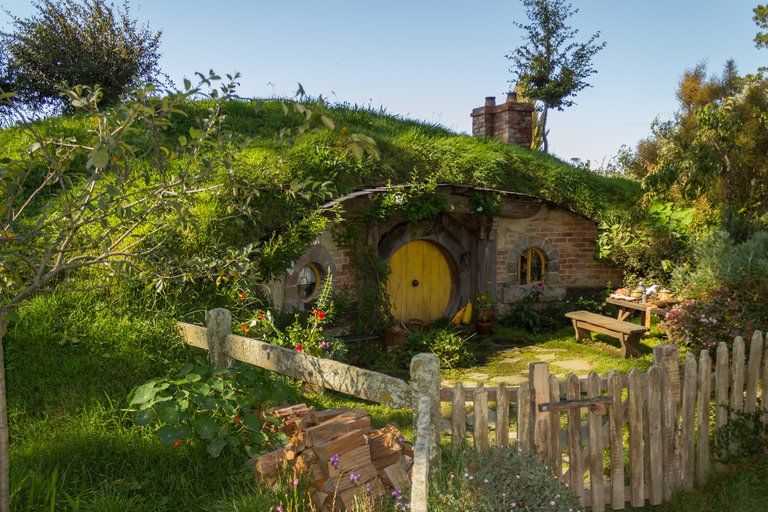
Hobbit house. Creative Commons, Flickr.com, Anup Shah.
I added hobbits to this list more because of the perception of Bilbo and Frodo as being somewhat apart from others. They were chosen to take on important roles because of their non-selfish qualities, which made them somewhat immune to the power of the ring, and in that way each of them was different from the others in the stories. And the hobbit houses, which were brought to life on screen in the movies, are the classic embodiment of hermit homes: living in harmony with nature in cute huts that any garden gnome would kill to have.
10.) Hermits in the Modern World
Inevitably, we come to the modern age and also find some people who have chosen to turn their backs on the world. The Hikikomori of Japan are people who have withdrawn from normal daily life, for reasons that I am not able to judge and which probably vary depending on the person. As I mentioned before, avoidance bothers me because it is no way to deal with problems. You do not progress in life by ignoring your demons; you must face them. That said, some people have done what they needed to do and then chosen to live on their own.

Christopher McCandless. Source: New York Times.
Perhaps we also should look to modern culture’s portrayal of hermits. The story of Christopher McCandless shows that society can still glorify a person’s choice to go live on his own. McCandless left it all behind and decided to go live in the wilderness of Alaska. Unfortunately, he did not survive. John Krakauer’s story Into the Wild tells his tale, as well as it could be reconstructed, and the book was made into a movie as well.
But modern culture also reminds us that hermits can be bull**** artists and political creatures. The wildly popular Game of Thrones book and television series brings us a number of hermit characters. One is Damphair, a member of the Greyjoy family, whose devotion to the Drowned God and peculiar religious practice are nothing short of parody. Melisandre, the Red Woman, fills more of a witchy oracle role. And yet, we are shown that her own ethical compass is way off base and that her predictions would not come true if not for her intervention and support of a royal contender.
And let’s not kid ourselves that people in the modern world would recognize Jesus Christ, the Prophet Muhammed, or Gautama Buddha if they were preaching on today’s streets. A lot of people would think they were crazy. St. Catherine of Sienna, one of Christianity’s most beloved saints, would be locked up in an insane asylum (or at least shunned or ignored) for describing her visions of a mystical marriage with Jesus using an invisible ring consisting of his foreskin. I’m sure it had more of a ring of truth to it at the time, but if someone on the street tried to sell me that, I’d drop a dollar in the tin can and keep walking (faster).
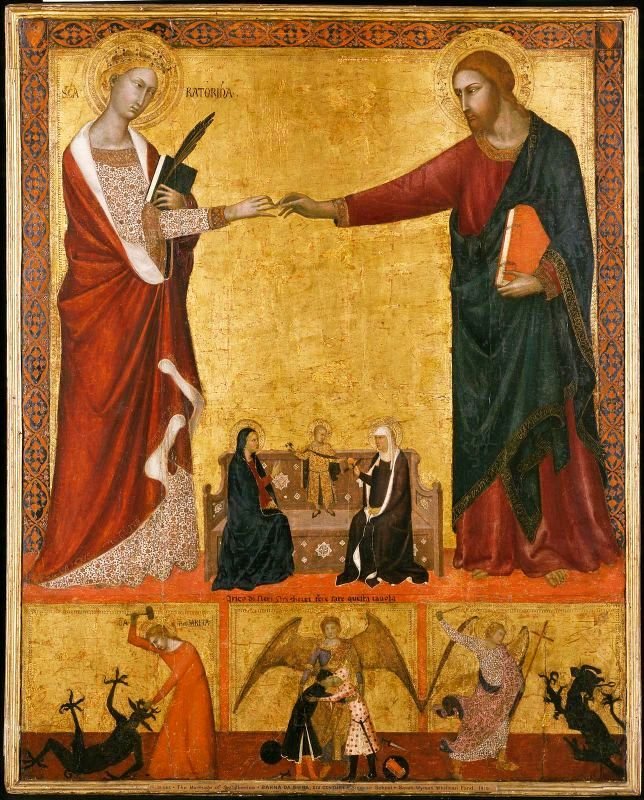
What does this all mean and what is the sum total of this two-post exploration of hermits? I am no closer now to understanding them or their value for humanity, but I’ve learned a lot from reading about them. The one thing that is clear to me is that at many times in our history, society has looked to the wisdom of those who choose to live apart from us for periods of time. In some religions and in secular life, there is a glorification of that lonely lifestyle and the ascetic approach to finding truth. But in the end, there are plenty of shysters and people who are either mentally ill or using their stories to manipulate others. Evaluating it all objectively is difficult, which must be where faith comes in.
Sources:
Sybil of Cumae: https://en.wikipedia.org/wiki/Cumaean_Sibyl
Hermits as Garden Ornaments: https://www.ft.com/content/66eae9bc-8999-11e3-8829-00144feab7de
Hermits as Feminists: https://aeon.co/essays/is-becoming-a-hermit-the-ultimate-feminist-statement
Mary of Egypt: https://en.wikipedia.org/wiki/Mary_of_Egypt
St. Jerome: https://en.wikipedia.org/wiki/Jerome
St. Bridget of Sweden: https://www.britannica.com/biography/Saint-Bridget-of-Sweden
Julian of Norwich: https://www.britannica.com/biography/Julian-of-Norwich
Red Woman: http://theconversation.com/the-red-woman-the-history-behind-game-of-thrones-mysterious-mystic-57840
Damphair: http://gameofthrones.wikia.com/wiki/Aeron_Greyjoy
Cumaean Sybil: http://classicalwisdom.com/sibyl-cumae/
St. Anthony: https://en.wikipedia.org/wiki/Anthony_the_Great
Ancient Mariner: https://www.poetryfoundation.org/poems/43997/the-rime-of-the-ancient-mariner-text-of-1834
Andrew Jackson’s Hermitage: http://www.travelthruhistory.tv/the-hermitage-nashville-tennessee/
Hermitage Museum Russia: https://en.wikipedia.org/wiki/Hermitage_Museum#Etymology
Thoreau: https://en.wikipedia.org/wiki/Henry_David_Thoreau#%22Civil_Disobedience%22_and_the_Walden_years,_1845%E2%80%931850
Hikikomori: https://en.wikipedia.org/wiki/Hikikomori
Into the Wild (McCandless story):
Life goals

This is one amazing write-up.
This is absolutely true. I know a lot of people who do this
Eat the right mushrooms and you start a religion.
Eat the wrong mushrooms and you never get to star in the movie based on the book you wrote.
That's a decent smattering of hermits you've listed, though one has to wonder how they were able to survive if they weren't farming or gathering food all the time. Even in hermitage people soon discover that others find a way to support good ideas with what help they can offer.
Hey @charitybot, I'm keeping this quote. Alright? Lolx. Its so true. Time and chance happens to us all...
You just made me realize I messed it up, lol.
That's a good one!
This is so interesting @communitycoin .....i just finished reading the part one and was pushed to read the second one...... Really interesting
Another wow encounter with the anon hermite researcher.
Love the way you write.
And your stories-in-stories definitely show that you have a wide reading capacity.
You touched theories, you touched facts. You hit on reality, you bounced on fiction.
Joan of Arc, Francis of Assissi etcz...
I left this post with an expanded brain.
And most importantly,
I agree with you that...
@Communitycoin and @donkeypong;
You rock!
Thanks for blessing my night (or day) with Anon De Mystic's Wit!
Cheers!
Wow
Just wow
I like it too..Im going to resteem!
Very good
very good examples of the hermit life, sometimes people just want to be alone and that is in their nature to just live life as it is, and in the end that is what makes them happy, not money or fame.
Congratulations @communitycoin, this post is the third most rewarded post (based on pending payouts) in the last 12 hours written by a Newbie account holder (accounts that hold between 0.01 and 0.1 Mega Vests). The total number of posts by newbie account holders during this period was 4274 and the total pending payments to posts in this category was $7425.45. To see the full list of highest paid posts across all accounts categories, click here.
If you do not wish to receive these messages in future, please reply stop to this comment.
wow
thanks for sharing such a lovely post
I like
Like this post
good works
This is truly fascinating, and very dear to my heart, @communitycoin. As an artist, I am particularly drawn to hermits, saints, mystics and solitaries of all persuasions. What they all have in common, I find, is a love of Silence, and the riches it bestows...
Below, are two meditations of mine on the many silences and what they can offer hermits (& non hermits, alike):
Notes on Silence, Part 1 https://steemit.com/writing/@yahialababidi/notes-on-silence-part-1
Notes on Silence, Part 2 https://steemit.com/writing/@yahialababidi/notes-on-silence-part-2
@communitycoin in answer to your question about the value of hermits for humanity, maybe Leonard Cohen's definition of a saint might help shed some light:
“What is a saint? A saint is someone who has achieved a remote human possibility. It is impossible to say what that possibility is. I think it has something to do with the energy of love. Contact with this energy results in the exercise of a kind of balance in the chaos of existence. A saint does not dissolve the chaos; if he did the world would have changed long ago. I do not think that a saint dissolves the chaos even for himself, for there is something arrogant and warlike in the notion of a man setting the universe in order. It is a kind of balance that is his glory. He rides the drifts like an escaped ski. His course is a caress of the hill. His track is a drawing of the snow in a moment of its particular arrangement with wind and rock. Something in him so loves the world that he gives himself to the laws of gravity and chance. Far from flying with the angels, he traces with the fidelity of a seismograph needle the state of the solid bloody landscape.”
― Leonard Cohen, Beautiful Losers
PS - Cohen himself spent 7 years in a monastery, and so understood well the value of withdrawing from society and leading a contemplative life...
An Appreciation of Cohen https://steemit.com/ocd-resteem/@yahialababidi/you-live-your-life-as-if-it-s-real-leonard-cohen-an-appreciation
We're not sure what the answers are, but if there are answers, Leonard Cohen surely had some of them.
Haha, good answer :) I'm a huge fan of The Man!